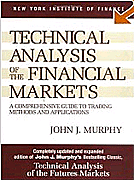Gold and silver slump - what's a precious metals investor to do?
Gold and silver slump - what's a precious metals investor to do?
Neal Ryan of Blanchard & Co looks at the factors behind the recent gold and silver price correction and offers advice for the precious metals investor
Author: Neal Ryan
Posted: Thursday , 17 May 2007
NEW ORLEANS (Blanchard & Co.) -
After rising over $3 and $0.10 in Asian trading, gold and silver began getting thumped anew on Thursday at the London open which led to prices taking another sharp turn lower at the NY open.
The market has started trading on technicals rather than any fundamental news, with sell side pressure and shorts currently in control of the market.
So what's an investor to do?
First and foremost, recognize that a precious metals investment isn't a day trade. We hammer on this issue to the point of exhaustion because people (present company included) get frustrated, upset, emotional and so on when the prices don't react the way we believe they should over a short time frame. Step back and look at the larger picture.
Precious metals are a medium to long term investment that is meant to be a meaningful diversification method against paper assets. But no one wants to invest in something that doesn't earn some return on ca pital. It's not like someone investing in a car that loses 40% of it's value when you peel off the lot hoping that if you wait 25 years it'll have a vintage appeal. The last five years, gold has shown an average annualized return of 19% each year, proving itself to be not only a diversification hedge, but an asset earning a return on investment at the same time. Not too shabby. Prices are up about 4% this year (or 9% if you mark the clock at Jan. 5th instead of Jan. 2nd).
What's next?
It's always tough to go out into the market with a prediction. We were wrong about the $700 level in weeks. Not because the fundamentals don't support that type of move - the fundamental picture for the market is more bullish today for increasing prices than it was just two years ago at $400 per ounce, but the market isn't trading on fundamental news at present. If it were, news like South African production being down 9% in a quarter compared to the year earlier period would send prices higher; instead the market continued trending downward.
Investment demand has cooled off in the last quarter according to the World Gold Council, but overall demand was still 4% higher. So at a time like this when fundamentals aren't in control of the market and the little golden bull is having his cart loaded up with a lot of paper to carry forward, investors need to take a step back and look at some larger market trends...
Mine Supply
We are believers that mine supply possibly peaked in 2001, at least until we see materially higher prices closer to 4-digits. Will supply increase off of these current levels? Maybe, sure. But we're still more than 7 million ounces short in annual production from equaling 2001 production levels. South African Mine spokespeople and Chief Executives of South African companies have publicly stated this past week that these trends aren't reversing. At this same time, the mega-mines like Grasberg, Yanacocha, and Goldstrike (all outside of South Africa) have gone from annual production figures of over 8 million ounces a year in 2004 between them to 5 million ounces of production annually. There are a few mega-mines waiting in the wings to come in and fill the role of a Goldstrike or Grasberg, but until those mines go online, nothing can be counted on as a given in the mining industry.
Labor
We're heading into another potentially bitter round of wage talks between the South African mining companies and the labor unions. Much like 2004 when a strike took down their production numbers considerably, those in the industry have expectations at present that the new round of talks could have a similar affect. There are also rumblings that Newmont's Yanacocha mine in Peru could be heading offline as the South African talks begin. Also, the world's largest platinum miner, AngloPlat, is having similar issues with their labor force, threatening to cause another round of strikes within the platinum producer ranks.
And this is just the crew digging the material out of the ground. A much larger concern is appearing on the horizon in mining offices around the globe with the current set of geologist, engineers and the like approaching a retirement age without any new blood entering the ranks to assume their place.
Dehedging
Dehedging was expected to slow down considerably in 2007 after having added nearly 13 million ounces of unexpected demand to the market in 2006. In reality, the exact opposite has taken place in the market with a spate of announcements in the first and second quarter about close outs and book reductions having added nearly 4.2 million ounces of demand to the market and pushing up overall expectations of hedge book close outs in 2007 to 11 million total ounces from estimates of 6-8 million ounces previously.
While there is no longer an 80 million ounce reduction that can take place in the market (thankfully!), there are still 38 million ounces sitting on books waiting to be dehedged. We believe this number will be cut down to 15 million ounces over the coming 2-3 years. Producers will always keep a nominal amount of project hedges on the book to be prudent, but millions of ounces hedged in the $300s while spot is kicking around $660 is neither prudent nor price protection. Investors have finally been able to press this view upon mining company executives.
Official Sector activity
Despite a strong reversal in selling trends for the calendar year of 2006-2007 in the last two months, it looks like ECB captive banks are still going to be short in terms of overall sales for a second year in a row. In the eight years of the CBGA agreements so far, that was the first time banks had failed to sell their full quota. 2007 looks like it will be the second. The last year has also seen central banks making 31 tonnes of purchases in the market. A fairly insignificant amount to be sure, but nearly 1 million ounces of purchases, is still nearly 1 million ounces of purchases.
According to the IMF, changes set to be implemented into the marketplace in 2008, investors will also begin getting a much larger appreciation for the lease and swap operations that take place inside of central banks. This market, which is estimated to be larger than mine supply, central bank sales, investment demand and scrap activity, will no longer be left to guesswork and estimates. Is the gold really in vaults in London or has it been leased out to fabricators and turned into trinkets in India and 18 carat necklaces in WalMart in Iowa? No one knows.
Current estimates target that there is currently 10% to 30% of central bank gold loaned or swapped into the marketplace. (estimates from GFMS, Virtual Metals and James Turk). When this information is no longer just estimates, but hard audited data, there will be an added transparency to the marketplace that has never previously been experienced. When the markets really know how much physical is in vaults versus IOU slips, that's when things will start to get interesting.
The trends above are the ones that precious metals investors need to grasp and understand, not the day trading noise out in the market. Take a position, have a long term outlook and understand the fundamental factors that influence the market, not the technicals that are currently controlling the price.
Neal Ryan is Vice President and Director of Economic Research for Blanchard Economic Research Unit (http://www.blanchardgold.com/)
Labels: Blanchard and Co, markets, mining stocks















![[Most Recent Quotes from www.kitco.com] [Most Recent Quotes from www.kitco.com]](http://www.kitco.com/images/live/t24_au_en_usoz_6.gif)
![[Most Recent Quotes from www.kitco.com] [Most Recent Quotes from www.kitco.com]](http://www.kitco.com/images/live/au_go_0030_ny.gif)
![[Most Recent Quotes from www.kitco.com] [Most Recent Quotes from www.kitco.com]](http://www.kitco.com/images/live/au_go_0365_ny.gif)
![[Most Recent Quotes from www.kitco.com] [Most Recent Quotes from www.kitco.com]](http://kitconet.com/charts/metals/silver/t24_ag_en_usoz_4.gif)

















0 ΣΧΟΛΙΑ (COMMENTS):
Post a Comment
<< Home